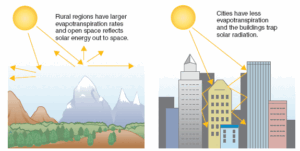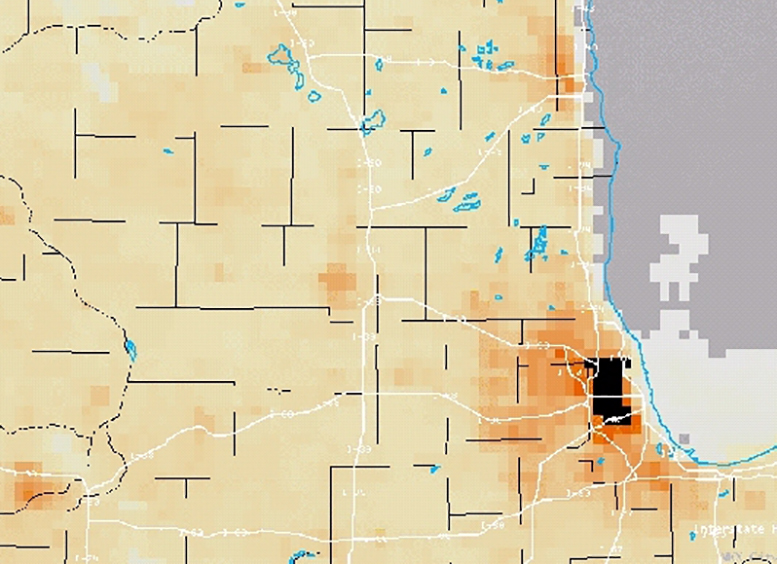On average, the city is warmer than the countryside. This difference in temperature is referred to as the urban heat island effect. A number of factors contribute to the relative warmth of cities, such as heat from industrial activity, the thermal properties of buildings and the evaporation of water.

For example, the heat produced by heating and cooling city buildings, and running planes, trains, buses and automobiles contributes to the warmer city temperatures. Heat generated by these objects eventually makes its way into the atmosphere, adding as much as one-third of the heat received from solar energy.
The thermal properties of buildings and roads are also important in defining the urban heat island. Asphalt, brick and concrete retain heat better than do natural surfaces. Buildings, roads and other structures add heat to the air throughout the night and, thus, reduce the nighttime cooling of the air so that the maximum temperature difference between the city and surroundings occurs during the night. The canyon shape of the tall buildings and the narrow space between them magnifies the longwave energy gains. During the day, solar energy is trapped by multiple reflections off the many closely spaced, tall buildings, reducing heat losses by longwave radiation.

Evaporation of water may also play a role in defining the magnitude of the urban heat island. During the day, the solar energy absorbed near the ground in rural areas evaporates water from the vegetation and soil. Thus, although there is a net energy gain from the sun, heating is reduced to some degree by evaporative cooling during evapotranspiration. In cities, where there is less vegetation, the buildings, streets and sidewalks absorb the majority of solar energy input and warm up rapidly.
Steve Ackerman and Jonathan Martin, professors in the UW-Madison department of atmospheric and oceanic sciences, are guests on WHA radio (970 AM) at 11:45 a.m. the last Monday of each month. Send them your questions at stevea@ssec.wisc.edu or jemarti1@wisc.edu.

